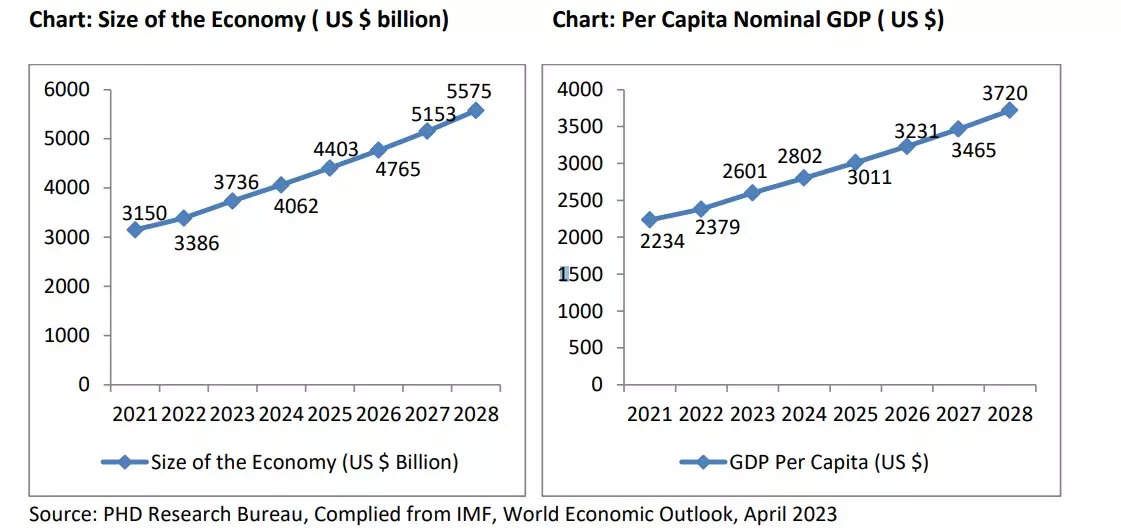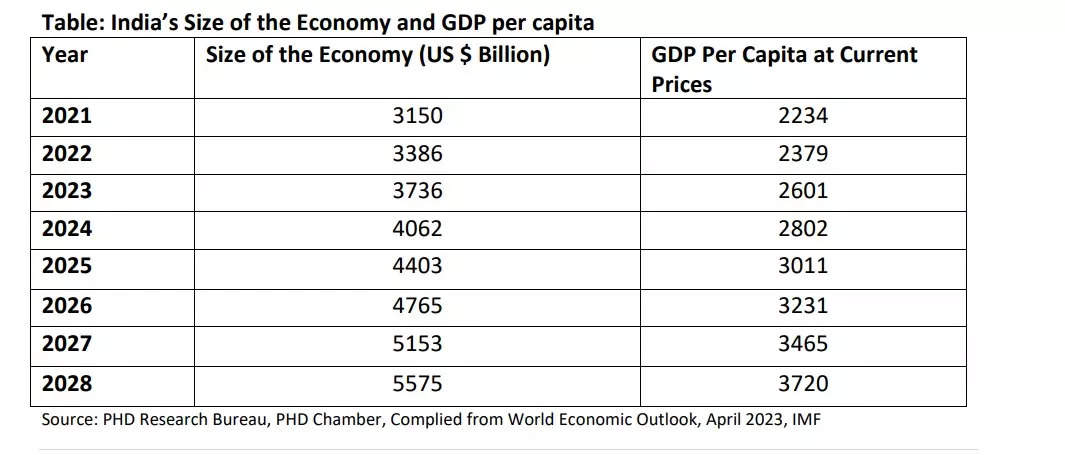The pace of economic activity is expected to remain strong on the back of various structural
reforms undertaken by the government during the last 3 years, noted the study, showcased during a seminar organised by the PHDCCI yesterday.”The recent budget for the FY 2023-24 has been announced at a time when India finds itself in the bright spot as the growth of Indian economy is highest among the leading economies. Going ahead, we need to focus more on the manufacturing sector as high cost of borrowings, high prices of raw materials have impacted the price – cost margins of the producers. Reduced cost of doing business such as easier compliances and a robust Single Window System will enhance ease of doing business in the country and help growth to become more strong and resilient,” it stated.
It further noted that although recent geopolitical developments had impact on Indian economy through the increase in raw material prices vis-à-vis imports of crude oil, depreciating rupee and inflation, the other channels such as exports and finance have not faced any major impact as India’s exports towards Russia and Ukraine are not that much strong; our external indicators are significantly strong such as forex reserves (Around USD 595 million on June 30, 2023).

Addressing the Seminar, Pronob Sen, Programme Director India Programme International Growth Centre (IGC) and Former Chairman, National Statistical Commission said that balancing Corporate and Non-Corporate Sectors remain key to addressing skill shortages in India. Achieving equilibrium between these sectors is crucial for the skilling system and India can pave the way for a more inclusive and sustainable development trajectory, reducing the overreliance on corporate-driven production structures.In his keynote address, Sen highlighted the current emphasis on the organised sector, particularly the corporate sector, in India’s statistical systems and data frameworks. He pointed out that although the non-corporate sector, particularly agriculture, is adequately covered, there is a lack of representation of non-corporate India due to infrequent and insufficient surveys. This discrepancy raises concerns about the inclusivity and accuracy of India’s statistical system.

Ashima Goyal, Professor, Indira Gandhi Institute of Development Research and Member, Monetary Policy Committee, RBI, highlightedthe need to acknowledge India’s low per capita income and its position in global rankings. Despite recent successes, India still has a long way to go in terms of growth. Dr. Goyal highlighted the unexpected outperformance of the Indian economy, particularly in the face of various shocks, such as the COVID-19 pandemic. Contrary to initial pessimistic forecasts, India’s growth revisions have been upward, indicating resilience and adaptability.
Rajmal, Director of Economic and Policy Research at the Reserve Bank of India, emphasised India’s economic strengths. Despite challenges at global and domestic levels, India has shown stability and consistent growth. The country’s resilience is evident in strong macroeconomic indicators like purchasing managers’ indices, air passenger traffic, diesel consumption, and port traffic. India’s economy has rebounded strongly from the pandemic and continues to surpass expectations. The Reserve Bank of India predicts a 6.5% growth rate and 5.1% inflation for the current fiscal year.
Yamini Agarwal, Director and Finance Professor at Bharti Vidyapeeth, New Delhi, stated that India is currently the world’s fastest-growing economy, according to institutions like the World Bank and IMF. With a GDP growth rate of 7.2%, India is expected to become the third-largest economy, surpassing Japan and Germany by 2027. The government has effectively managed growth and inflation, keeping inflation rates between 4.58% and 4.65%. India’s Hon’ble Prime Minister, Shri Narendra Modi, envisions inclusive growth with the motto “Sabka Saath, Sabka Vikas, Sabka Vishwas,” aiming to make India a developed nation by 2047.
Manpreet Juneja, Senior Economist, Global Infrastructure Hub (GIH), Toronto, Canada, discussed India’s growth. Juneja analysed India’s growth dynamics through the lens of infrastructure. ” The country is addressing past weaknesses by increasing infrastructure investments, transitioning to renewable energy, and attracting private investment. India’s services sector, particularly IT, drives export growth,” she said.
Saurabh Sanyal, CEO & Secretary General, PHDCCI, stated that India’s economy has garnered praise from global agencies and organisations. The G20 headquarters and member countries have commended India’s dynamism and performance in various sectors. India’s technological advancements, including the UPI credit scheme, are being adopted by developed economies like Japan and Singapore. Despite the pandemic, India has shown remarkable resilience and emerged as a rapidly growing economy.
S P Sharma, Chief Economist, PHDCCI, emphasised that the Indian economy has emerged as the fastest-growing among leading economies, showcasing remarkable resilience and recovery. “Despite facing significant challenges during the coronavirus pandemic, the economy has experienced a robust rebound. The implementation of reforms in India has garnered global recognition and yielded tangible and profitable results. Notably, the economy surpassed expectations by achieving a remarkable growth rate of over 7.2% in 2022 -23,” he said adding that projections indicate India’s continued outperformance of China, with an estimated growth rate of 6.1% over the next five years.









